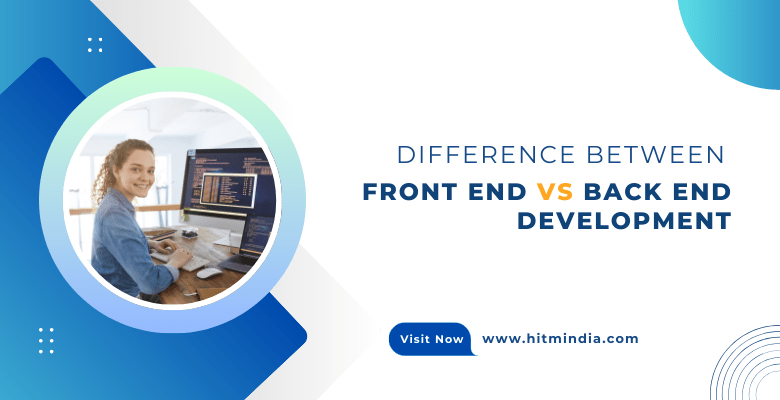Frontend vs Backend Development

Frontend and backend development serve as the twin pillars of web development, akin to the roles played in filmmaking by what’s visible on screen and the technical work behind the scenes. In web development, frontend refers to the visible part of a website or application, while backend encompasses the technical processes that power its functionality.
Both frontend and backend are essential for a website to operate seamlessly. While frontend deals with the visual elements that users interact with, backend focuses on the behind-the-scenes operations that drive the website’s functionality. Understanding the distinction between these two aspects is crucial for aspiring web developers as they embark on their career paths.
In this blog, we’ll delve into a detailed comparison of frontend and backend development, exploring the languages, frameworks, libraries, and technologies associated with each.
What is Frontend Development?
Frontend development, also known as client-side development, revolves around the visual and interactive elements of a website or application that users directly engage with. This includes everything from layout and design to user interface elements such as buttons, menus, and graphics. Frontend developers use languages like HTML, CSS, and JavaScript to bring designs to life and ensure optimal user experience.
Frontend development prioritizes responsiveness and performance, aiming to create websites and applications that adapt seamlessly to various devices and deliver smooth user experiences.
Features of Frontend Development:
- Graphics
- Symbols and design elements
- Content management
- Navigation design components
- Animated elements
How Frontend Works:
Frontend development involves crafting the graphical user interface (GUI) that users interact with directly. This includes defining the structure of the frontend using HTML, styling elements with CSS, and adding dynamic functionality with JavaScript.
What is Backend Development?
Backend development, also known as server-side development, focuses on the behind-the-scenes architecture of a website or application. It involves handling data storage, processing user requests, and ensuring the overall functionality of the website. Unlike frontend, users do not directly interact with the backend, but it plays a crucial role in delivering dynamic and engaging experiences.
Components of Backend Development:
- Server: Responsible for processing user requests and distributing work.
- Database: Stores and organizes data for the application.
- Application: Software that assists users in performing specific tasks.
How Backend Works:
The backend receives requests from the frontend, processes them, and sends back responses. It interacts with various components such as microservices, database servers, and third-party APIs to fulfill user requests. Backend development employs different communication protocols and technologies to handle multiple requests simultaneously, ensuring the smooth functioning of websites and applications.
By understanding the nuances of frontend and backend development, aspiring web developers can choose their area of expertise and embark on a rewarding career in web development.
Difference Between Frontend and Backend Web Development
| Parameters | Frontend | Backend |
|---|---|---|
| Definition | Visible part of the website or app, including user interface elements. | The behind-the-scenes operations that power the website's functionality. |
| Languages | HTML, CSS, JavaScript | Python, Java, PHP, Ruby, etc. |
| User Interaction | Direct interaction with users. | Indirect interaction, users do not directly interact with backend. |
| Focus | Visual and interactive elements, user experience. | Data storage, processing, and overall website functionality. |
| Components | Graphics, design elements, navigation menus. | Server, Database, Application. |
| Objective | Ensure responsiveness and performance for optimal user experience. | Handle data storage, process user requests, ensure website functionality. |
| Tools/Frameworks | React, Angular, Vue.js, Bootstrap. | Node.js, Django, Flask, Laravel. |
| Example | Buttons, menus, layout. | Database management, server configuration. |
Prithvi Prajapati
Digital Marketer | SEO & PPC Strategist | Performance Specialist
Prithvi Prajapati is a seasoned Digital Marketer specializing in SEO and PPC strategy at KRIL Digital, with over 5 years of industry expertise. With a background in Information Technology, Prithvi holds diplomas in Digital Marketing and Performance Marketing, ensuring a comprehensive understanding of online marketing dynamics. Dedicated to delivering results-driven solutions, he is committed to staying at the forefront of digital trends and innovations. Beyond the digital realm, Prithvi is passionate about continuous learning and enjoys exploring new avenues for professional growth.

